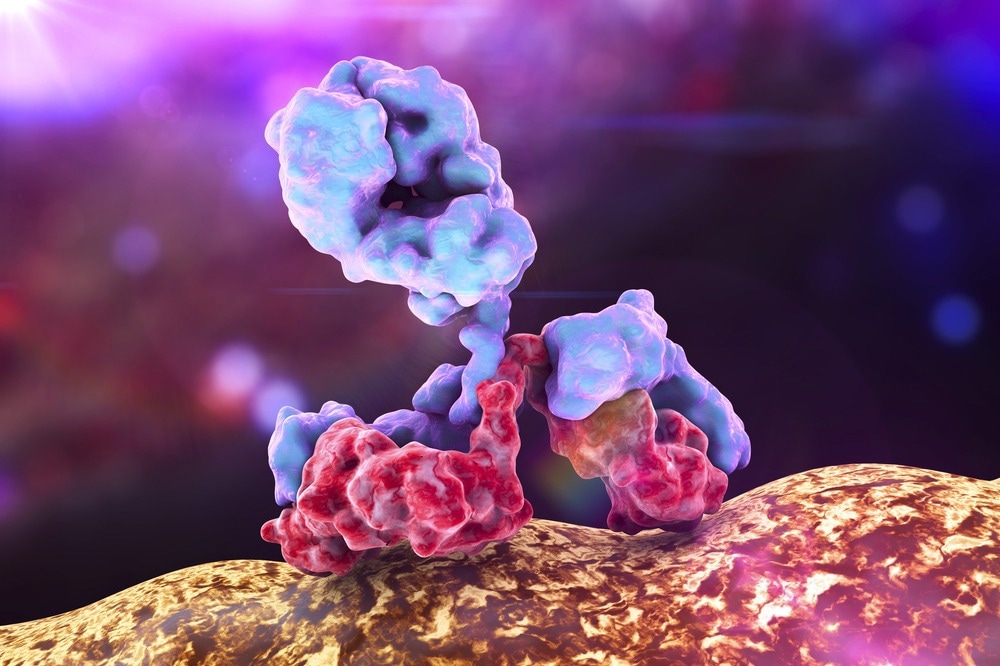Next-generation protein therapeutics have become popular amongst researchers, especially after the emergence and development of novel COVID-19 vaccines, including mRNA vaccines, that thrust this concept into the spotlight at a global scale.

Image Credit: ustas7777777/Shutterstock.com
According to Evaluate Pharma sell-side consensus forecasts (Biopharma Dealmakers, June 2020, B3), the four-year outlook for this revolutionary area, including the cell, gene, and nucleic acid therapy market, comprised $38 billion in June 2020. After a year, excluding the contribution of COVID-19 vaccines, this four-year outlook rose even higher to $41 billion.
Protein-based therapeutics have become integral to the growth and advancement of medical treatment, with the approval of human insulin being the starting point of this revolutionary field as the first protein therapeutic product three decades ago. Since this approval, the protein therapeutics field has matured exponentially, with novel technologies and engineering efforts utilized to construct protein molecules that achieved remarkable pharmacologic, pharmacokinetic, and pharmacodynamic properties.
After this monumental effort, the Food and Drug Administration (FDA) approved more than 130 protein and peptide-based therapeutics for clinical use by 2015. Of these 130 approved products, 30 were monoclonal antibody-based therapeutics, considered the most successful biotechnology drugs.
Categories and Features
There are a number of categories related to next-generation protein therapeutics, which range from simply modified antibodies to non-antibody protein scaffolds and can target various molecules. Next-generation protein therapeutics include but are not limited to, engineered monoclonal antibodies, immunoconjugates, bi/multi-specific, antibody mimetics or novel scaffolds, and engineered ligands and receptors.
Monoclonal Antibodies
A main feature of engineered monoclonal antibodies included having increased effector function, such as through antibody-dependent cell-mediated cytotoxicity (ADCC) and antibody-dependent cellular phagocytosis (ADCP).
Immunoconjugates
Immunoconjugates, such as antibody-drug conjugates, can include site-specific conjugation of drugs on engineered antibodies. Other immunoconjugates comprise immunotoxins, immunocytokines, radioimmunoconjugates, and antibody-directed enzyme prodrug therapy (ADEPT) – an antibody conjugated to an enzyme. These immunoconjugates encompass antibodies that are used as target delivery agents for highly concentrated and potent drug molecules. There are more than 50 immunoconjugates within clinical trials, with some being approved by the FDA consisting of Kadcyla, Mylotarg, and Adcetris.
Bi/Multi-Specific
Bi/multi-specific next-generation protein therapeutics include many types, such as asymmetric immunoglobulin-G-like molecules, which aims to retain the overall monoclonal antibody structure that worked to have each arm bound to a different antigen. An example of one of these drugs being approved by the FDA includes Removab.
Antibody Mimetics/Novel Scaffolds
Antibody mimetics/novel scaffolds, such as adhirons, included a protein of plant origin consisting of a hundred amino acids, with a four-strand antiparallel beta-sheet core and a central helix. Another example includes kunitz domain, a disulfide-rich protein consisting of 50–60 amino acids and an alpha and beta fold inspired by the active domains of human protease inhibitors, which the FDA had approved in the form of a drug called Kalbitor.

Image Credit: Kateryna Kon/Shutterstock.com
Engineered Ligands and Receptors
Engineered ligands and receptors are a type of next-generation protein therapeutics, with an example being ‘receptor decoy’ strategy, which includes binding domains of multiple receptors that are expressed together to bind and inhibit many related ligands as well as their isoforms. This strategy aims to assist in blocking multiple ligand-receptor interactions that drove independent pathways, which were synergized through amplifying the same signal. This type of strategy has been proven effective, with the FDA approving two drugs related to this category, including Eylea and Zaltrap.
Future Outlook
Peptide therapeutic development has increased over the years, especially with the advancements in structural biology, recombinant biologics, and novel technologies.
A 2022 study has reported 33 non-insulin peptide drugs that have been approved since 2000, with these peptide drugs being described as more sophisticated than being constructed of natural amino acids. An example of one of these drugs includes enfuvirtide, which is a 36-amino acid biomimetic peptide that mimics the human immunodeficiency virus (HIV) proteins used in combination therapy for treating HIV-1.
Next-generation protein therapeutics aim to revolutionize medical treatments, with these innovative treatments being more targeted to disease markers, which can produce more effective treatments for a range of diseases. This is especially significant for diseases such as HIV, orphan diseases, and diseases without treatment or a cure, such as neurodegenerative diseases, which devastated a large volume of the aging population globally.
Sources:
- Shah, D.K. (2015) “Pharmacokinetic and pharmacodynamic considerations for the next generation Protein therapeutics,” Journal of Pharmacokinetics and Pharmacodynamics, 42(5), pp. 553–571. Available at: https://doi.org/10.1007/s10928-015-9447-8.
- Verdin, P. and Mon Tsang, T. (2021) Next-generation therapeutics thrust into the spotlight, Nature News. Nature Publishing Group. Available at: https://www.nature.com/articles/d43747-021-00105-y (Accessed: March 1, 2023).
- Wang, L. et al. (2022) “Therapeutic peptides: Current applications and Future Directions,” Signal Transduction and Targeted Therapy, 7(1). Available at: https://doi.org/10.1038/s41392-022-00904-4.
Further Reading
Last Updated: May 16, 2023